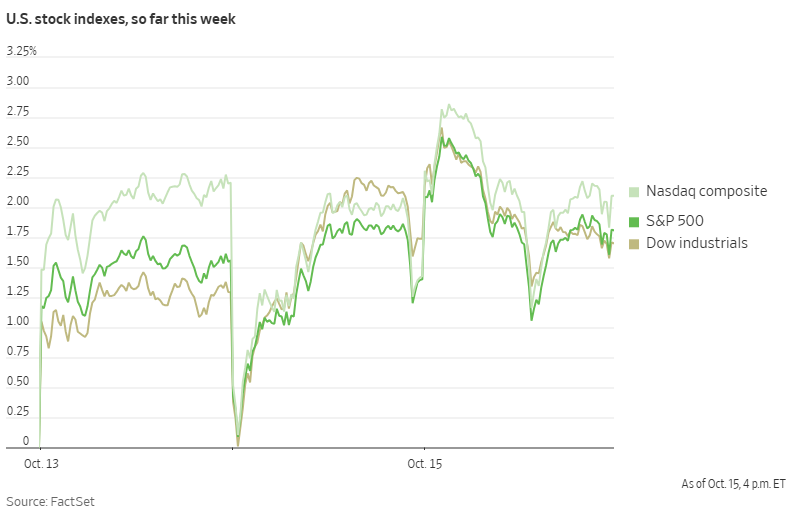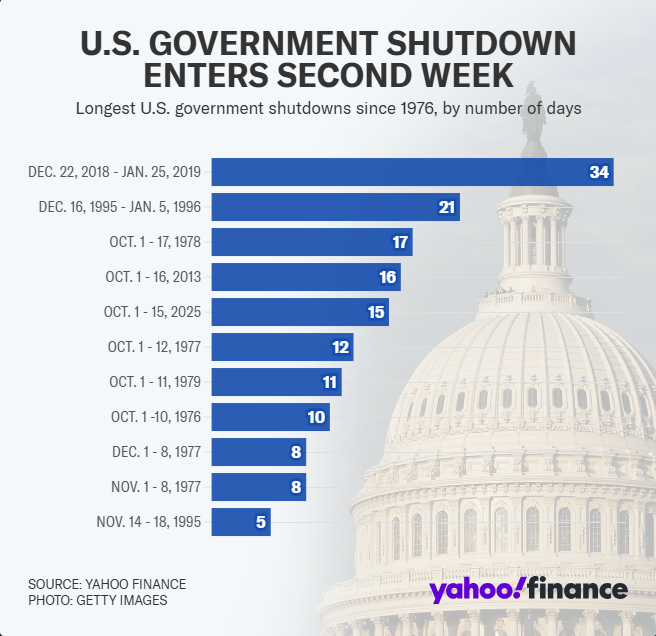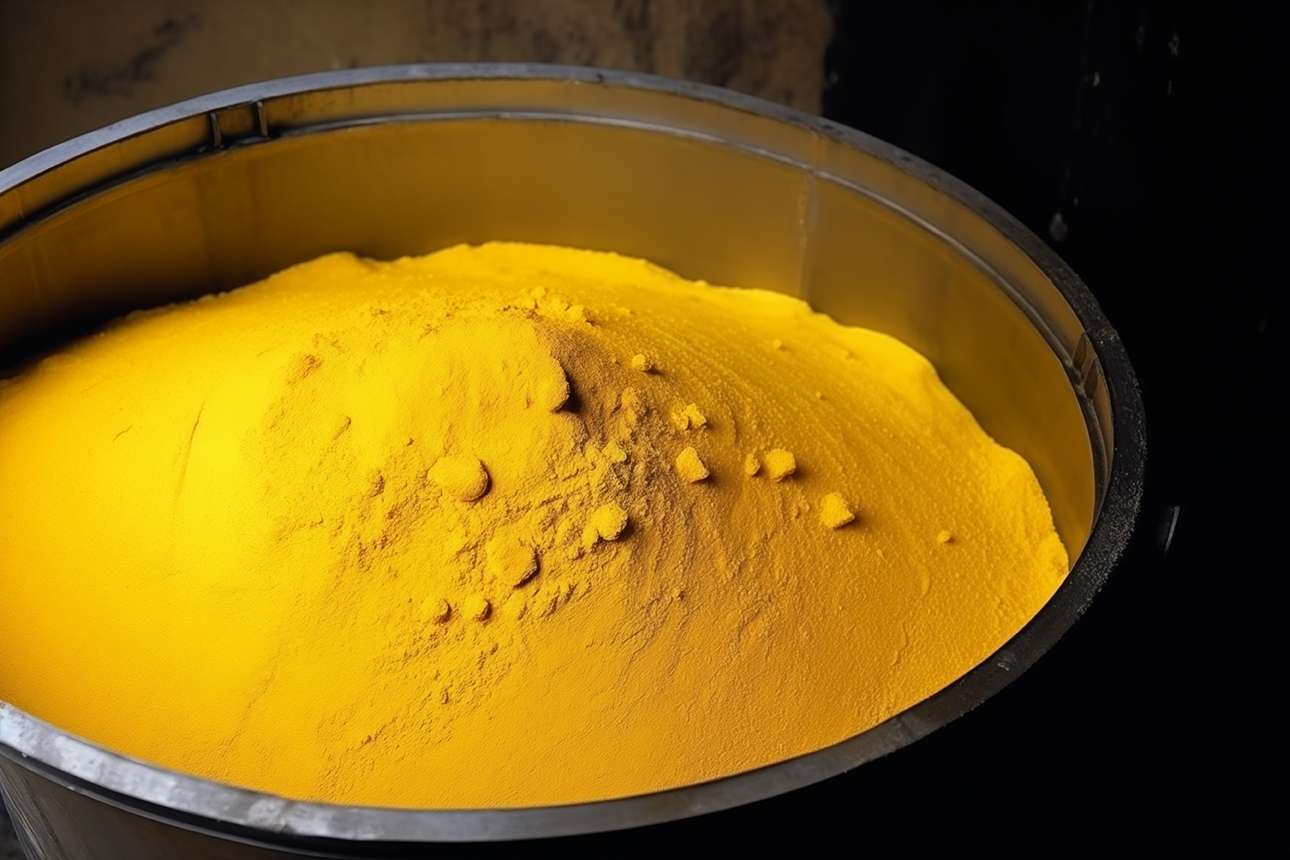ข่าวสารตลาด & มุมมองเชิงลึก
ก้าวนำตลาดด้วยมุมมองเชิงลึกจากผู้เชี่ยวชาญ ข่าวสาร และการวิเคราะห์ทางเทคนิค เพื่อเป็นแนวทางในการตัดสินใจซื้อขายของคุณ.

S&P 500 and ASX Rally as Big Banks Drive Markets
Both the S&P 500 and ASX have rallied on the back of stronger-than-expected major bank earnings reports on both sides of the Pacific.
In the US, Bank of America reported a 31% year-over-year increase in earnings per share at $1.06, exceeding Wall Street's estimate of $0.95. Meanwhile, Morgan Stanley delivered a record-breaking quarter with EPS of $2.80, a nearly 49% increase from the same period last year.

On the Australian front, the benchmark ASX 200 leapt 1.03% to 8990.99, with all four major Australian banks playing a major role. CBA closed 1.45% higher, Westpac 1.98%, NAB 1.87%, and ANZ 0.53%.
These strong bank results indicate broader economic strength, despite recent concerns about US-China trade tensions. US Treasury Secretary Scott Bessent emphasised that Washington did not want to escalate trade conflict with China and noted that President Trump is ready to meet Chinese President Xi Jinping in South Korea later this month.
With the third-quarter earnings season just getting underway, these early positive results from financial institutions could prove as the start of continued market strength through to the end of the year.
U.S. Government Shutdown Likely to Last Into November
Washington remains gridlocked as the U.S. enters its 16th day of shutdown. With no signs of compromise on the horizon, it appears increasingly likely the shutdown will extend into November and could even compromise the Thanksgiving holiday season.
Treasury Secretary Scott Bessent has warned "we are starting to cut into muscle here" and estimated "the shutdown may start costing the US economy up to $15 billion a day."
The core issue driving the shutdown is healthcare policy, specifically the expiring Affordable Care Act subsidies. Democrats are demanding these subsidies be extended, while Republicans argue this issue can be addressed separately from government funding.
The Trump administration has taken steps to blunt some of the shutdown's immediate impact, including reallocating funds to pay active-duty soldiers this week and infusing $300 million into food aid programs.
However, House Speaker Mike Johnson has emphasised these are merely "temporary fixes" that likely cannot be repeated at the end of October when the next round of military paychecks is scheduled.

By the end of this week, this shutdown will become the third-longest in U.S. history. If it continues into November 4th, it will surpass the 34-day shutdown of 2018-2019 to become the longest government shutdown ever recorded.
This prolonged shutdown adds another layer of volatility to markets. While previous shutdowns have typically had limited long-term market impacts, the unprecedented length and timing of this closure, combined with its expanding economic toll, warrant closer attention as we move toward November.
Trump Announces Modi Has Agreed to Stop Buying Russian Oil
Yesterday, Trump announced that Indian Prime Minister Narendra Modi has agreed to stop purchasing Russian oil. He stated that Modi assured him India would halt Russian oil imports "within a short period of time," describing it as "a big step" in efforts to isolate Moscow economically.
The announcement comes after months of trade tensions between the US and India. In August, Trump imposed 50% tariffs on Indian exports to the US, doubling previous rates and specifically citing India's Russian oil purchases as a driving factor.

India has been one of Russia's top oil customers alongside China in recent years. Both countries have taken advantage of discounted Russian oil prices since the start of the Ukraine invasion.
Analysis suggests India saved between $2.5 billion to $12.6 billion since 2022 by purchasing discounted Russian crude compared to other sources, helping support its growing economy of 1.4 billion people.
Trump suggested that India's move would help accelerate the end of the Ukraine war, stating: "If India doesn't buy oil, it makes it much easier." He also mentioned his intention to convince China to follow suit: "Now I've got to get China to do the same thing."
The Indian embassy in Washington has not yet confirmed Modi's commitment. Markets will be closely watching for official statements from India and monitoring oil trading patterns in the coming weeks to assess the potential impact on global energy flows and prices.
Chart of the Day - Gold futures CFD (XAUUSD)


There's been plenty made this year about gold's incredible rise to new record levels. A point that gold bugs love to point out. As we sit here gold is trading at around US$2700oz having reached an all-time high that was just shy of US$2900oz.
Thus the question has to be asked: where is the limit? And where too from here for the inert metal? The movements over the last five years clearly suggest there is a structural change going on inside the very definition of what gold is. 14.7% in the last six months. 29.4% year to date. 34.2% in the last 12 months A staggering 82.3% in the last five years.
That is telling a story that is different to the original fundamentals we were taught at university and then as fundamental traders. Let's look at that theory: gold usually trades closely in line with interest rates, particularly US treasuries. As an asset that doesn't offer any yield it typically becomes less attractive to investors when interest rates are higher and usually more desirable when they fall.
That still technically holds true, However what has changed is how much central banks are interfering with that fundamental. Since 2022 when Russia invaded Ukraine one of the main reactions from the West was to freeze Russian central bank assets. Since that point the Russian central bank particularly has been buying gold as a form of asset store/reserve.
It has also allowed it to avoid the full force of financial sanctions placed on it. But they're not the only ones doing this; emerging market central banks have also stepped up their purchasing of gold since this sanction was put in place and are rapidly increasing their own central bank reserves. Then we look at developed markets central banks.
The likes of the US, France, Germany and Italy have gold holdings that make up to 70% of their reserves are net buyers in the current market. That suggests something else is afoot. Are they concerned about debt sustainability?
Considering the US has $35 trillion of borrowings which is approximately 124% of GDP, do central banks around the world see risk? Considering that many central banks have the bulk of their reserves in US treasuries coupled with the upcoming unconventional administration in the Oval Office this certainly puts gold’s safe haven status in another light. There are truly unknowns with the upcoming trump administration and gold is clear hedging play against potential geopolitical shocks, trade tensions, tariffs, a slowing global economy, deft defaults and even the Federal Reserve subordination risk So what is the outlook for Gold over the coming years and just how high could it go?
Consensus over the next four years is quite divided: by the end of 2024 the consensus is for gold to be at US$2650oz and then easing through 2025 to 2027 to $2475oz. However there are some that are calling for gold to reach the record reached in September this year before surging towards $2900oz the end of 2025 and holding at this level through most of 2026. And right now who could blame this prediction - Gold bugs believe the confidence in gold’s enduring appeal amid a volatile macroeconomic and geopolitical landscape is a bullish bet.
Expectations for sustained diversification and safe-haven flows do appear structural and with central banks and investors seeking to mitigate risks in an environment characterised by persistent uncertainty, geopolitical tensions, and economic volatility. And it's more than just the demand side that's leading the charge. The supply side of the equation further supports our bullish outlook.
Gold mine production is inherently slow to respond to rising prices due to long lead times for exploration, development, and production ramp-up. Furthermore, major producers avoid aggressive hedging strategies, as shareholders typically prefer full exposure to gold’s upside potential. The supportive fundamental backdrop reinforces that demand from both the official sector and consumers will remain robust, while supply-side constraints provide a natural tailwind for price appreciation.
What we as traders need to be aware of is many investors actually believe they've missed the rally and are wary of buying gold at all-time highs. There are some that believe gold is due pull back even a correction as they struggle to make sense of gold in the new world. The divergence away from yields coupled with unknowns out of China and the US has made them nervous to buy this rally.
But we would argue the pullback has probably already happened. If we look at the gold chart, since the US presidential election gold has moved through quite a reasonable downside shift. Dropping from its record all time high to a low $2530oz.
That decline has clearly been cauterised and the momentum now is clearly to the upside. We can see from the chart that spot prices are now testing the September-October consolidation period. Any clean break above these levels would see it going back to testing the head and shoulders pattern at the end of October-November.
This will be the keys to gold for the rest of 2024. But whatever happens in the short term the long-term trend suggests there is more for the gold bugs to delight in.


Yellowcake - a commodity that is loved and loathed all in the same breath. The questions we have been asking are - which is right and what’s the outlook? Because as traders and investors that dilemma is key, there is a gap here and that leads to volatility and incorrect pricing in the short and long term some may want to jump on.
Recent developments in the uranium market suggest we may be witnessing the beginning of a significant shift. After a prolonged period of downward pressure on prices, two key events over the past two weeks have kicked yellowcake back into the minds of traders. First is the geopolitical supply shock, the second are signals of increased long-term demand.
That is music to us in economics as this is a pure supply and demand thematic and suggests a potential reversal. Together, they could usher in a new phase of steady price appreciation, reminiscent of the market's bullish run in 2023. Point 1: Demand Side: U.S.
Energy Policy Could Lay the Foundation for Long-Term Growth The first major factor influencing uranium demand stems from the U.S. political landscape. The election of President-elect Donald Trump introduces a new energy agenda, one that could reshape the trajectory of nuclear power in the United States. While Trump's campaign rhetoric and early post-election messaging have heavily emphasised fossil fuel expansion - check last week’s piece on the "drill, baby, drill" thematic - it’s clear that nuclear power also holds a significant place in his vision for America’s energy future.
Trump has repeatedly voiced support for nuclear energy, particularly for small modular reactors (SMRs). These advanced nuclear technologies are seen as the next generation of clean energy solutions, offering modular, scalable power generation with enhanced safety and efficiency. In recent speeches and interviews, Trump has highlighted (in his view) nuclear energy is part of the solution needed in achieving sustainability, lower carbon emissions, and enhancing U.S. energy independence.
That last point is actually his biggest driver here being an America First ideal. This policy focus could mark a critical inflection point for uranium demand globally. While nuclear infrastructure projects are long-term endeavours and won’t generate immediate demand for uranium, the signals are clear: the U.S. government may soon prioritise nuclear energy investments in ways we haven’t seen in decades.
It also comes at a time when the likes of France and to some extent greater Europe moves in this direction. Either way as these plans materialise, uranium’s importance as a strategic resource will only grow. Moreover, Asia is also shifting its focus to this energy source as well.
Asian countries are increasing their reliance on nuclear energy to meet ambitious carbon neutrality targets. This international momentum could compound the effects of U.S. policy changes, creating a robust foundation for sustained uranium demand over the next decade. Point 2 Supply Side: Part 1 Russia’s Export Restrictions Tighten the Market The second major development is far more immediate and impactful.
That changes on the supply side of the equation. Last week, Russia announced new restrictions on the export of enriched uranium to the United States, escalating geopolitical tensions and significantly disrupting global supply chains. This move mirrors the U.S.’s earlier ban on Russian uranium imports, imposed in May 2023 as part of broader sanctions against Russia.
Historically, Russia has been a critical player in the global uranium market, supplying enriched uranium to numerous countries, including the United States. In 2023 alone, Russia accounted for 28 per cent of U.S. enriched uranium imports, a substantial share of the market. Although U.S. sanctions effectively ended these imports by August 2023, waivers remain in place for select companies, allowing limited purchases from Russian suppliers until 2028 such as Centrus Energy and Constellation Energy.
What isn’t clear is whether any imports have actually taken place under this exemption since the sanctions were tightened. Either way Russia’s new export restrictions will exacerbate existing supply chain constraints and are likely to push U.S. utilities to seek alternative sources of enriched uranium. This, in turn, should drive increased activity in both spot and futures markets as energy providers scramble to secure long-term supply agreements.
The ripple effects of these restrictions may also spill over into global markets, further tightening the balance of supply and demand. Part 2 Wider Supply Challenges: A Tighter Market Ahead The second part of the supply side equation is that Russia isn’t the only player and recent production reports, and other geopolitical issues are also driving shortages in uranium For example: Niger’s Production Halt: Orano, a major uranium producer, recently placed Niger’s only operational mine into “care and maintenance” code for moth balling due to logistical challenges. The catch with putting mines into care and maintenance is that once its down it takes months (sometimes years) to return to full capacity.
So it’s not just a here and now story. Be aware this mine, which has an annual capacity of 2,000 tonnes of uranium (tU), accounts for approximately 3 per cent of global supply. The halt underscores the fragility of the uranium supply chain in politically unstable regions.
Junior Miners Struggling: Smaller uranium miners are cutting their production targets for 2024 and 2025 due to a combination of slower-than-expected ramp-ups, lower ore grades, and resistance from local communities. Collectively, these issues have removed an estimated 2,600 tU from projected global supply—roughly 4 per cent of the market. Offsetting Gains Insufficient: While Cameco has announced a 1-million-pound (365 tU) increase in its 2024 production guidance thanks to improved performance at its McArthur River mine, these gains are insufficient to offset broader supply losses.
With supply tightening, producers struggling to meet commitments in the spot market, the pressure is building on the supply that is in circulation – and that is a price enhancer. Where does this leave Uranium? These developments create a powerful pinch point in the uranium market.
There is a promising long-term demand story evolving driven by potential shifts in U.S. energy policy and global momentum toward nuclear energy. On the flip-side, immediate supply constraints, driven by geopolitical tensions and production challenges, are tightening the market. The convergence of these factors could mark the start of a new cycle characterised by sustained price increases.
While it’s too early to definitively declare a bull market, the conditions are becoming increasingly favourable. For investors, this shifting landscape presents an opportunity. If supply disruptions persist, the uranium market could experience a strong rebound in the coming months.
Prices in both the spot and term markets are likely to reflect this tightening balance, creating a more attractive risk-reward dynamic for those positioned to take advantage of the trend. Big caveat - the uranium market is notoriously volatile and can see +/- 20 per cent moves in days or weeks. But the current setup suggests a potential turning point that could define the market's trajectory for years to come.


The last two months, with accelerated selling over the last fortnight, have seen considerable drops in major commodity prices. Oil is at its lowest point since early September, copper likewise and gold futures have dropped almost 8% since the beginning of the month after making record highs. Consequently, on the ASX we have seen the materials sector as a whole drop 6.92%.
Whether a trader or investor in commodity futures or companies in that sector the impact has been significant. In this overview article we discuss the reasons for this and offer some thinking on what may be next for price movement in the three major commodity assets of gold, copper and oil. We will first review factors which influence price before subsequently using these concepts to help understanding of what may be happening, What moves commodity prices – an overview?
In any examination of commodity pricing, it is worth revisiting the broad drivers of market sentiment towards commodities as it will provide context not only for what is happening now but going forward in the short and long term. Although there will be fluctuations due to repositioning from market participants, including of course institutional holding and even government stock levels, we would suggest that there are five key factors: 1. Supply and Demand Dynamics: a.
Factors Affecting Supply: Production Levels: Variations in production due to technological advancements, increasing or decreasing cost of extraction, industrial action, or natural disasters can significantly impact supply. For instance, a major oil producer increasing output can lead to a surplus, driving prices down. Geopolitical Events: Conflicts, trade embargoes, or political instability in key producing regions can disrupt supply chains.
The 2022 Russia-Ukraine conflict, for example, led to disruptions in wheat and energy supplies, causing price spikes. b. Trends in Demand: Economic Growth: Clearly economic growth has a positive impact of demand for commodities as multiple projects are more likely to have funding available both on a micro level with individual businesses and a macro level with national funding potentially more available. Conversely, economic slowdowns reduce demand, leading to price declines.
Organisational Activity: Sectors such as construction and manufacturing drive demand for raw materials. A surge in infrastructure projects can elevate demand for commodities like cement and iron ore. Additionally, of course where increases and cuts in production are controlled by organisations where these exist, OPEC being the obvious example, then this will alter the supply-demand relationship, and so price.
Consumer Behaviour: Actual or potential shifts in consumer preferences, either originating from the consumer (or government poli, such as increased demand for electric vehicles, boost the need for lithium and cobalt. Alternatively, a move towards plant-based diets can affect meat commodity markets. 2. Global Economic Conditions: GDP Growth: Strong GDP growth signals robust economic health, increasing demand for commodities.
In contrast, recessions typically lead to reduced demand and lower prices. Inflation: High inflation can erode purchasing power, decreasing demand. However, commodities like gold often serve as inflation hedges, potentially increasing their demand and price.
Interest Rates: Higher interest rates can strengthen a currency, making commodities priced in that currency more expensive for foreign buyers, potentially reducing demand. 3. Currency Fluctuations: U.S. Dollar Relationship: Many commodities are priced in U.S. dollars.
A stronger dollar makes commodities more expensive for holders of other currencies, potentially reducing global demand and lowering prices. Conversely, a weaker dollar can make commodities cheaper internationally, boosting demand and prices. 4. Geopolitical and Government Events: Wars and Conflicts: Armed conflicts can disrupt production and supply chains, leading to shortages and price increases.
The Middle East conflicts have historically affected oil prices due to supply concerns. Sanctions: Economic sanctions on producing countries can limit supply. For example, sanctions on Iran have impacted global oil supply and prices.
Trade Agreements: New trade deals can open markets, increasing demand and prices, while trade disputes can lead to tariffs, reducing demand and affecting prices. Government policy: Specific changes in government policy, often occurring significantly on change in government as well as midterm will impact of perceived future demand 5. Technical price movements Whichever way you slice it, the impact of actual price movements both current and historical does contribute to what may happen to price subsequently, at least in the short term.
There are two key references that are worthwhile bearing in mind. Support and resistance levels: Previous price action turning points are points at which there has already been significant price action previously, these are used as reference for change in sentiment are places at which future decisions may be made and where many traders place pending orders Market psychological levels: “Round numbers” are often seen, even if largely illogical in terms of actual value of an asset, as being important to market psychology. Multiple of $10, $100, $1000 for example may prove stubborn to breach or significant if there is a move through, often precipitating further trading activity.
Utilization Changes: Developments in renewable energy technologies can reduce demand for fossil fuels, impacting their prices. So, what has happened to pricing and what next? As previously stated, we will focus on the three main commodities of gold, oil and copper and using the broad principles above attempt to unpick what has happening and look into the market “crystal ball to provide a potential outlook.
Gold Gold price breach of a key resistance level after six months of rangebound trading in July signified a major shift in sentiment for the precious metal, and markets saw the interesting and somewhat unusual state where Gold and the USD were moving in the same direction. Gold hit record highs, reaching almost 2800 on 30 th October. An expected profit-taking retracement at the turn of the month soon turned into a reversal, as USD strength continued, and the price dropped through 2700 then 2600 before coming to rest and pause at a 2-month low and what could turn into a support level at 2550 on Friday.
Further selling could see price challenge the next key psychological level at 2500 The recent Gold price decline has been influenced by three key factors: 1. Strengthening U.S. Dollar: The U.S. dollar has appreciated due to robust economic data and perhaps a pause in rate cuts the Federal Reserve and the inflationary pressures of tariffs if implemented by the incoming new US administration in January.
A stronger dollar makes gold more expensive for holders of other currencies, reducing its demand and price. 2. Rising Bond Yields: Increased U.S. Treasury yields have made interest-bearing assets more attractive compared to non-yielding assets like gold, leading investors to shift away from gold. 3.
Reduced Geopolitical Tensions: Although the potential for re-escalation of geopolitical tensions is always present, particularly in the Middle East, appear for now to be decreasing when compared to that of a couple of months ago. Increasing geopolitical tension often results in a flight to safety. There is no doubt this contributed to the previous gold price strength and hence a decrease in tension has resulted in a decrease in price.
Gold outlook: Analysts have mixed views on gold's future trajectory: Potential for Recovery: Some strategists believe that ongoing geopolitical uncertainties and central banks' gold purchases could support a rebound in gold prices. Continued Downward Pressure: Conversely, if the U.S. dollar remains strong and interest rates stay elevated, gold may face further declines. Copper Copper futures hit record highs in May this year of $5.20 and gave away over 25% to not a low in mid-august of $3.19 to officially enter bear market territory.
It has been a wild ride since then with a strong but temporary rally upwards followed by a sharp sell-off over the last couple of weeks, with a price move through the 200ema and pausing at support around $4.05. A breach of $4 and August’s low price could precipitate more selling. Downwards pressure on copper prices is occurring due to three key factors: 1.
Weakening Demand from China: China, the world's largest consumer of copper, has experienced economic challenges, particularly in the real estate sector. Impacts of an increases in US tariffs may slowdown exports and further upset growth. An actual and potentially worsening reduced demand for copper may contribute further to price declines. 2.
Global Economic Uncertainties: Concerns about a global economic slowdown have, and may continue to, dampen industrial activity including construction, decreasing the demand for copper globally. Although, it is fair to categorise the slowdown to be a “soft landing” after potential widespread recession was potentially on the agenda. 3. Supply Surplus: Increased production and rising global inventories have led to a surplus in the copper market, exerting downward pressure on prices.
The demands of copper usage from renewable energy infrastructure projects were one of the reasons why we saw bullish moves in copper through the early part of the year. But with stock level as increased and perhaps a “handbrake’ on the enthusiasm frow governments funding of infrastructure, and notably clear pre-election narrative from the Republicans in the US perhaps the market in pricing a decrease in such compared to that which was expected. Copper Outlook: Generally, analysts appear unoptimistic relating to copper's future trajectory, although as you would expect there are still some contrary views.
Continued Downward Pressure looks likely in the short term with most analysts suggesting at best a maintenance of current range around the $4 level. Of course, USD strength is contributory to potential demand challenges in those transaction in alterative currencies. Many are seeing a test of August lows as likely.
In the longer term, demand may still be intact driven by the global energy decarbonisation and related infrastructure projects, could support a rebound in copper prices. However, the latter may take some time to see moves that push price anywhere near May levels which now seem an increasingly distant memory. Oil Friday’s close price on the WTI futures contract fell slightly below lows last hit the end of October and September respectively at $67.14, and recording a 7% drop for the week.
Any further drop is likely to threaten mid-September lows, and a breach of this would represent a low price not seen for 18 months. Although this could be seen as positive from a reduction in inflation point of view, at this stage the pressure is most certainly downwards. Oil prices have recently declined due to several key factors: 1.
Weaker Demand from China: China, the world's largest crude importer, has shown signs of a sluggish economic recovery, leading to reduced oil consumption. In October, China's oil processing dropped by 4.6% year-over-year, marking the seventh consecutive month of decline. 2. Supply Surplus Expectations: The International Energy Agency (IEA) forecasts an oversupply of oil by 2025, anticipating a supply surplus of 1 million barrels.
This expectation has contributed to downward pressure on current oil prices. 3. Stronger U.S. Dollar: A strengthening U.S. dollar, which reached its highest in a year, has made oil more expensive for holders of other currencies, thereby reducing global demand and contributing to price declines.
Oil outlook: Although there are mixed views on the future trajectory of oil prices, Chinas economic state is critical. This could further impact on a supply surplus, as would the proposed ramp up of US oil production as outlined in Trumps “drill, baby, drill” pre-election promises. OPEC+ production decisions will impact of course, but with production cuts extended into 2025 with little impact in holding up price to date is noteworthy.
Some experts suggest that U.S. oil prices could range between $60 and $70, with a possibility of dropping to $50 in a price war scenario or further evidence of economic slowdown. Further Chinese stimulus measures could support price in the medium term if implemented. In summary As you can see from the above there are common threads” (e.g.
USD strength, relative economic decline), and idiosyncrasies in each of the major commodities. Whether a trader or investor in commodity futures or companies in that sector the impact has and may continue to be significant going forward of some of the issues discussed above. It is therefore your responsibility to not only keep abreast of price movements but changes in some of the key factors outlined in this article.
Of course, GO Markets is always here to help with our extensive updates and live events that may offer insight to help you in your commodity exposure decision making.


There has been plenty of conjecture about where oil is going to go in 2025 and we would suggest that the recent climb in Brent crude oil prices above $80 per barrel reflects an intensifying mix of geopolitical uncertainty. The main 3 uncertainties driving oil have been the impact of the U.S. presidential election, the escalation of the Middle East tensions and anticipation surrounding the OPEC+ meeting on December 1. These factors are clearly shaping short-term oil price dynamics, although some uncertainties have begun to ease, namely the election and the Middle East, but they still hold sway.
Thus let’s explore revised demand and supply projections as the industry anticipates a potential surplus in 2025 and the enactment of the Trump administrations Drill. Drill. Drill policy. 1.
Middle East Tensions Geopolitical tensions in the Middle East have posed a notable risk to the global oil supply particularly the conflicts involving Israel and Iran and the potential disruptions it would cause to OPEC’s 5 largest producers. However, so far, oil infrastructure in the region has largely remained intact, and oil flows are expected to continue without significant interruptions. While exchanges between regional powers remain a potential flashpoint, there is a general consensus that the two countries have stepped back from the worst.
The base case for this point is to assume stability in oil transportation routes and infrastructure. However, as we have seen during periods of unrest this year the consequences of a flare up for global oil prices can be considerable, underscoring the market's sensitivity to even minor shifts in Middle Eastern stability. 2. U.S.
Presidential Election – Drill Baby Drill The U.S. presidential election outcome has had a muted effect on oil prices – so far. This is likely due to President-elect Trump's policies regarding the energy being ‘speculative’. But there are several parts of his election platform that will directly and indirectly hit oil over the coming 4 years.
First as foremost – its platform was built on ‘turning the taps back on’ and ‘drill, drill, drill’. Under the current administration US shale gas and new oil exploration programs have come under higher levels of scrutiny and/or outright rejections. The new administration wants to reverse this and enhance the US’ output.
This is despite consensus showing these projects may return below cost-effective rates of return if oil prices remain low and the cost of production above competitors. Second, although President-Elect’s proposed tariff policies—ranging from 10-20 per cent on all imports, with higher rates on Chinese goods—could slow global trade, the net effect on the oil market is uncertain. Consensus estimates have the 10 per cent blanket tariff reducing U.S.
GDP growth by 1.4 per cent annually, potentially cutting oil demand by several hundred thousand barrels per day. If enacted, this bearish influence could counterbalance any potential bullish effects on prices. The third issue is geopolitics again – this time the possible reinstatement of the "maximum pressure" campaign on Iran that was enacted in the first Trump administration.
If the Trump administration imposes secondary sanctions on Iranian oil buyers, Iran’s exports could drop as they did during the 2018-2019 period, when sanctions sharply curtailed oil shipments. Such a development would likely tighten global supply and drive prices higher. These three issues illustrate possible impacts U.S. policy could have in 2025 and illustrate how contrasting economic and geopolitical factors could sway oil prices in unpredictable ways.
It again also explains why reactions in oil to Trump’s victory are still in a holding pattern. 3. What about OPEC? This brings us to the third part of the oil dynamic, OPEC and its upcoming Vienna convention on December 1.
The OPEC+ meeting presents another key variable, currently the consensus issue that member countries face - the risk of oversupply in 2025 and what to do about it. Despite Brent crude hovering above $70 per barrel, a price point that has normally seen production cut reactions, consensus has OPEC+ maintain its production targets for 2025, at least for the near term. We feel this is open for a significant market surprise as there is a growing minority view that OPEC+ could cut production by as much as 1.4 million barrels.
With Brent prices projected to stabilise around the low $70s, how effectively OPEC+ navigates this delicate balance between production and demand remains anyone’s guess and it's not out of the question that the bloc pulls a swift change that leads to price change shocks. December 1 is a key risk to markets. Where does this leave 2025?
According to world oil sites global supply and demand projections for 2025 suggest a surplus of approximately 1.3 million barrels a day, and that accounts for the recent adjustments to both demand and OPEC supply which basically offset each other. With this in mind and all variables remaining constant the base case for Brent is for pricing to sag through 2025 with forecasts ranging from as low as $58 a barrel to $69 a barrel However, as we well know the variables in the oil markets are vast and are currently more unknown than at any time in the past 4 years. For example: Non-OPEC supply growth underperformed in 2024, which is atypical; over the past 15 years, non-OPEC supply has generally exceeded expectations.
With Trump sworn in in late-January will the ‘Drill, Drill, Drill policy be enacted quickly and reverse this trend? This may prompt a supply war with OPEC, who may respond to market conditions by revising its output plans downward, which would tighten supply and support prices. In short its going to be complex So consensus has an oil market under pressure in 2025 with a projected surplus that could bring Brent prices into the mid-$60s range by the year’s end.
But that is clearly not a linear call and the global oil market faces an intricate array of challenges, and ongoing monitoring of these trends will be essential to refine forecasts and gauge the future direction of prices, something we will be watching closely.


Why you need to understand this market concept to improve your trading: Market Correlation For new traders and experienced traders, it can be daunting trying to find the best assets to trade. Whether it be equities, foreign exchange or indices, traders should be trying to have as many factors pointing in their favour as possible when entering a trade. These factors can include, the general trend of the individual asset, the price action at the time of entering the trade, candlestick patterns, use of technical indicators, among many others.
However, one thing that all traders should know about and understand is correlation. What is Correlation? Correlation is the pattern or relationship of how one asset performs relative to another asset.
In statistics, there are mathematical measures of correlation including covariance, correlation coefficients and other terms to describe the relationship of one asset to another. These methods can also be used to quantify asset correlations. A correlation between assets can be positive negative or uncorrelated.
Understanding which relationship between different assets can help provide some indication of the way in which an assets price will go. Below is a diagram that shows how the return of assets can be plotted against each other and the potential relationship. For example, imagine that there are two gold companies Gold company A Gold company B Assume that the price of their shares is perfectly, positively, correlated.
This means that when gold company A’s share price rises by 1% company B’s share price will also rise by 1%. This same price action will occur in reverse if the price of company A falls by 1%. Now in practice no two assets are perfectly correlated.
However, two or more assets may be very strongly correlated. Therefore, identifying how correlated certain assets are and how the price of one impact on the other can be a powerful tool. What creates correlation?
Strong correlation between assets usually occurs because the price of the different assets is material impacted by very similar factors. For instance, two companies in Australia may be more correlated than one company in Australia and one company in the USA. This is because geographically the Australian companies will be affected the local economic conditions.
This may include things such as inflation, taxation policies and other geographical specific conditions. Other factors that can influence the correlation include similarity of the assets or a company’s business operations, being in the same sector or a range of other factors. For example, see the correlation between the ‘Big 4’ banks in Australia below.
It can be seen due to how similar the businesses are and the conditions of which they operate in the pattern on returns are almost identical. Index correlation An important phenomenon to understand is the law of averages and big numbers. Essentially, if large companies are grouped together then they act as a good proxy for the overall market or a specific sector.
This essentially is what an ETF or and Index is. Therefore, as it represents how most individual companies are performing, most companies will be to a degree correlated to the overall market index or relevant sector index or ETF. Size matters Another important thing to understand about how correlation works is that smaller assets or companies will tend to correlate towards the performance of the major players within the sector.
For instance, in the technology sector, smaller technology company’s such as zoom will likely be correlated to larger companies such as Apple and Microsoft by virtue of being in the same sector. Correlations do not just occur in equities and are prevalent in FOREX and commodities. Correlation can be found between growth assets such as the Nasdaq Index which is a technology heavy Index and growth currencies such as the AUD or NZD.
Similarly, more stable assets such as the Dow Jones will likely be more correlated to commodities such as oil, they represent more stable industry and manufacturing sectors. How does it improve your trading? By simply being aware of the direction of the correlated assets, a trader is better able to trade with underlying trend and momentum.
This is vital when trying to optimise edge and improve trading accuracy. It can also equally show when a stock is underperforming or overperforming. For instance, if the general trend of a sector leader is trading 5% higher over a certain period, and a smaller company in the sector is trading at 10% higher it is outperforming the ‘sector’ and understanding why this occurs is an important step into deciphering what is driving price action.
Having a good understanding of how assets correlate can also help find potential trading opportunities earlier than others. This is because by following a sector it becomes easier to see which assets still may have room to shift their price. Ultimately, if a trader can develop their identification of patterns of correlation and the reasons for the relationships between different assets it can provide a trader with a much stronger and accurate edge.


China’s recent shift in economic policy and its potential for fiscal stimulus reflect an evolving approach to support economic stability. Following previous monetary easing measures, including a reduction in the Reserve Ratio Requirement and interest rate cuts in late September, China’s National People’s Congress (NPC) Standing Committee has now approved a local government debt restructuring plan. This plan allows for up to RMB 10 trillion (~US$2.54 Trillion) in debt adjustments, including a one-time increase of RMB 6 trillion in the special debt ceiling over 2024-2026, and an additional RMB 800 billion in special bond quotas annually from 2024 to 2028.
These measures align with expectations, the catch – it’s estimated to add just 0.1 per cent to China’s GDP. Naturally this left the market disappointed and saw Chinese equities shredded. But it's more than the lack of direct demand-side stimulus.
It’s the vague guidance on the use of bonds for banking sector recapitalisation as well as poor outlining on housing inventory buy-backs, and idle land. It's all a bit, ‘nothing’. Now we admit market expectations had been high, so price falls were inevitable, but the metals prices post-meeting were telling from both a short- and longer-term perspective.
First support for the housing market may be limited in the near term, given that primary home sales for top developers turned positive up 15 per cent year-on-year from June last year and home prices rose slightly 0.4 per cent in 50 cities September to October. Second is a possible trade war and having some powder dry as it gears up for the next four years of a Trump 2.0 administration. Fiscal Stimulus is clearly going to be part of this.
And already we have seen Finance Minister Lan Foan, in comments to the South China Morning Post discussing this very point. He pointed out that China’s Ministry of Finance has a readiness for fiscal expansion starting in 2025 and that China’s current debt-to-GDP ratio (68%) provides fiscal headroom, especially in comparison to Japan (250%) and the U.S. (119%). So is that suggesting it’s a ‘when’ not an ‘if’?
From a trader and markets perspective the answer may come at the Central Economic Work Conference in December is expected to outline specific fiscal measures for 2025, potentially focusing on reducing housing inventory, boosting infrastructure, and enhancing social welfare and consumption. The market consensus is for between RMB 2-3 trillion in fiscal expansion over the next one to two years, likely with an initial emphasis on infrastructure investment over consumption support. We should point out this could be a “fourth strike and you’re out” territory as expectations for delivery since Gold Week celebrations have been 0-3, a fourth miss might see the markets completely ignoring what has been promised.
However if it does eventuate looking historically, such investment-heavy stimulus cycles have bolstered demand for steel and other raw materials. China’s past stimulus responses, particularly during the 2018-19 U.S. tariff period, included fiscal stimulus and currency depreciation, indicating that fiscal policy could adjust in response to global economic factors. However, China’s approach to fiscal expansion this time may differ slightly from past cycles: Reason 1: Steel Demand: Prior fiscal expansions, such as during 2009-2010 and the 2018-19 tariff period, drove strong steel demand growth.
Investment in steel-intensive infrastructure, for example, boosted annual steel demand by approximately 200 million tons (a 30 per cent increase) between 2016 and 2019, raising the steel intensity of GDP by 7 per cent. Given China’s high cumulative steel stock—estimated at around 8.5 tons per capita (approaching developed-nation averages of 8-12 tons per capita)—the scale of future infrastructure investment may be more limited, as large physical projects are increasingly complete and the need for new largest scale projects is moderating. Reason 2: Shift To Consumption and Social Welfare: Since 2018 China has subtly and gradually shifted fiscal efforts toward consumer support and social welfare to address deflation risks.
This shift is likely to accelerate, as policy moves to an emphasis on stimulating internal demand through social spending. Now historically China has often favoured investment-driven stimulus to support GDP growth targets, which could mean another infrastructure-led, steel-intensive approach if economic conditions demand it, albeit possibly on a smaller scale than in the past, but again 0-3 on promises, there are risks it doesn’t materialise this time around. The next part of the story for commodities and a China stimulus story is the impending trade war.
China is clearly facing headwinds for its exports, given the likely policy changes from the second Trump administration. The biggest issues are the 10 per cent tariff on all imports and up to 60 per cent on Chinese goods. The timing and specifics of the tariffs are uncertain, but using his 2016-2020 timelines as a guide it's likely to be one of the first programs enacted and new tariffs could emerge as early as the first half of 2025.
Currently, more than 20 per cent of China’s steel production is tied to exports—11 per cent directly and 12 per cent indirectly through products like machinery and vehicles—any new tariffs on Chinese goods would likely impact steel output and, subsequently, iron ore demand. During the 2018-19 tariff period, China’s direct steel exports to the U.S. declined, but this was balanced by growth in indirect steel exports via manufactured goods and bolstered by domestic infrastructure demand which is hard to see this time around. 2025 strategies China might deploy to counteract any new tariffs could include currency depreciation, reciprocal tariffs, re-routing exports to new markets, and increased fiscal and monetary stimulus. Interestingly the U.S. comprises only 1 per cent of China’s direct steel export market, it the larger share for indirect exports, particularly machinery ~20 per cent that is the issue.
Since 2018, China has expanded its steel-based goods exports by focusing on emerging markets—a resilience that will likely be tested further if tariffs intensify next year. So where does this leave iron ore? Current iron ore prices, hovering around US$100 per tonne, seem to reflect current market fundamentals pretty accurately.
The substantial net short positions in SGX futures, which were prevalent prior to the late-September stimulus, have notably diminished in the past 6 weeks China’s recent policy adjustments have mitigated the downside risks for steel demand for the remainder of 2024. This is coupled with solidifying demand indicators and restocking activities, which may bolster seasonal price strength as the year concludes. Nevertheless, the potential impact of a seasonal price rally may be constrained by relatively high port stock levels, which presently stand at about 41 days of supply which again underscores why price around US$100 a tonne is accurate.
Looking ahead to 2025, the Ministry of Finance in China signalling forthcoming fiscal expansion suggests a potential upside risk. However, potential new tariffs from the U.S. may pose challenges to steel export volumes, potentially counteracting the positive effects of domestic fiscal measures. China’s response to such tariffs—potentially through currency depreciation, trade redirection, or additional fiscal and monetary stimulus—will be crucial in mitigating these pressures.
But this would be a zero-sum game effect. Thus any upside risks are counted by downside risks – this leads us to conclude that China is not going to be the White Knight of the past. And that 2025 is going to be a tale of two competing forces that sees pricing see-sawing around but finding equilibrium at current prices.
This also leads us to point to equities – iron ore and cyclical plays have benefited strongly over the past 24 months on higher prices and the long COVID tail. 2025 appears to be the year that tail ends and a new phase will begin.

